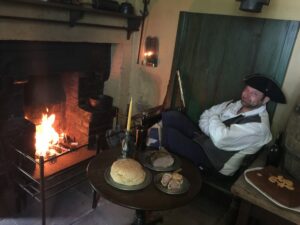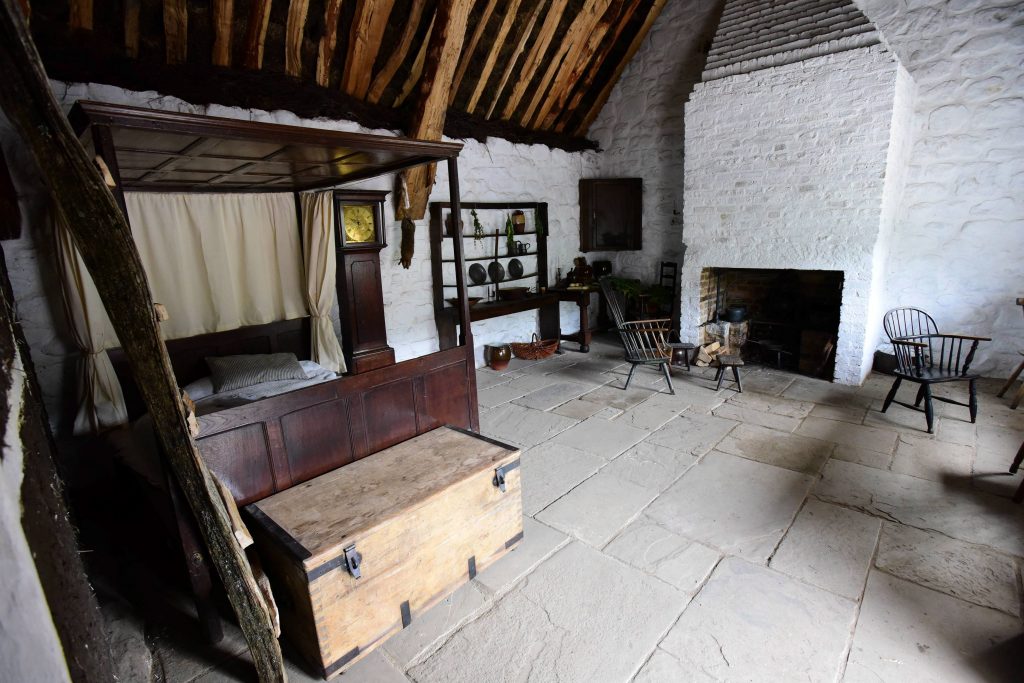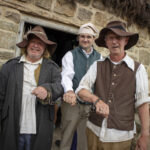Complete
The quilter’s cottage in The 1820s Landscape shows one of the many cottage industries that could be found in the 1800s – quilting.
The exhibit shares the fascinating story of quilter Joseph Hedley, whose work was reportedly sent as far as America. He was well known for using a border pattern, which became known as “Old Joe’s Chain”.
Joe was murdered in 1826 in an appalling crime that shocked the nation, it is because of this crime that we know so much about him and his life – it’s very unusual to have this much information about an “ordinary” person from Georgian times.
At the exhibit, visitors can discover the interesting story of cottage industries, learn about quilting, explore the world of 1800s crime and punishment, admire the vegetables growing in the garden and see the chickens in their coop.
Joe was born in 1750, we know that he had a wife who we believe to have been 25 years older than him. He apprenticed as a tailor before turning his hand to quilting but, despite his skill and popularity as a quilt maker, Joe was considered to be poor. We are fortunate to have, in our collection, one of just three remaining quilts thought to have been created by him.
Beamish has recreated Joe’s cottage, the original was demolished in 1872. A drawing on a postcard that was produced after Joe’s murder gave valuable details about how his home looked. A crack in the front wall of the original cottage, clearly visible in the 1820s drawing, has even been reproduced.
An archaeological dig was carried out by Beamish staff and community volunteers at the site of his cottage in Warden, near Hexham, in September 2015 and, within three days, the team found the first blocks of stone.
The excavation found extensive remains of the building including the lowest courses of three of the four walls, a fireplace, the internal partition wall and a section of the flagstone floor, as well as animal bone buttons, a horseshoe and a large number of iron nails.
The cottage was recreated at Beamish with traditional techniques and skills, using local materials. Around 1,400 bales of heather were sustainably sourced from near Rothbury, Northumberland, and a master thatcher taught his craft to museum staff and volunteers. Stone dating back over 200 years, and 23 tonnes of oak for the roof frame also came from Northumberland, near where the cottage once stood.
- Celebrations at the opening of the quilter’s cottage.
We worked with members of the local community at every stage of the project to develop the cottage. Community volunteer Richard Young lives in Wall, Northumberland, near the site of Joe’s cottage. He was involved in the project throughout, including the archaeological dig, gathering heather, the stone laying ceremony, splitting timber for the roof frame, helping with the wattle and daub partition wall and preparing objects from Beamish’s collections for use in the cottage.
The quilter’s cottage was the first exhibit to be completed as part of the £20million Remaking Beamish project in July 2018.
Related Exhibits
Pockerley Farm Cottages and Flint Mill Cottages
For the first time, visitors will be able to stay overnight at Beamish, offering a unique and immersive Georgian experience in farm buildings original to the Beamish site.
Read moreGeorgian Pottery

We will expand the range of early cottage industries which visitors can experience with the introduction of a small Georgian pottery in The 1820s Landscape.
Read moreDrovers' Tavern

Visitors will be able to enjoy Georgian inspired food and drink at the new Drover’s Tavern based in the farm buildings behind Pockerley Old Hall.
Read more

